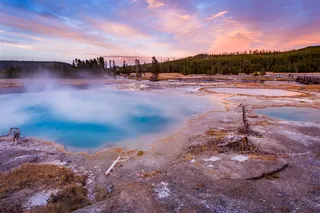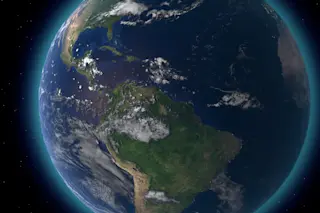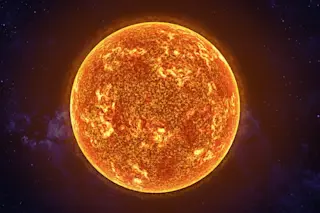Recently, a gargantuan explosion on the Sun — perhaps approaching the power of a billion hydrogen bombs — propelled many tens of billions of tons of particles out into space at 1.5 million miles per hour. As dramatic as this solar eruption may sound, it is not terribly unusual. It's called a coronal mass ejection, and it is a normal aspect of the sun's activity. But one thing about this particular CME, which occurred on May 9, does stand out: It was the first ever observed by a new NASA spacecraft — and in such breathtakingly closeup detail that when you watch the video above you'll almost feel like you had a ring-side seat. (WARNING: You might also feel like your hair is about to catch fire...) The spacecraft is called the Interface Region Imaging Spectrograph. Launched in June of 2013, IRIS is designed to see into the lowest levels of the Sun's atmosphere, called the corona, with higher resolution than has previously been possible. In the video above, a curtain of glowing material explodes outward across a scene that is about as wide as five entire Earths, and roughly seven and a half Earths tall. Capturing it so spectacularly was a bit of a feat, according to NASA:
IRIS must commit to pointing at certain areas of the sun at least a day in advance, so catching a CME in the act involves some educated guesses and a little bit of luck. "We focus in on active regions to try to see a flare or a CME," said Bart De Pontieu, the IRIS science lead at Lockheed Martin Solar & Astrophysics Laboratory in Palo Alto, California. "And then we wait and hope that we'll catch something. This is the first clear CME for IRIS so the team is very excited."
A coronal mass ejection happens when magnetic fields stretch upward from the sun, twist, and break, hurling a huge mass of solar plasma out into space.
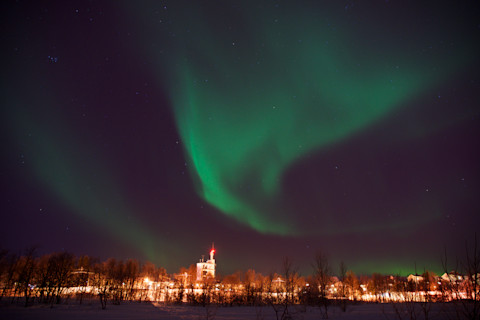
The aurora borealis as seen from Tromsø, Norway in January of 2014. (Photograph: © Tom Yulsman) This particular CME was not directed at Earth. But when Earth is in the way of a passing CME, both mayhem and magic can happen. The magic is, of course, the aurora. This happens when charged particles from a passing coronal mass ejection — or just from the ordinary solar wind — are funneled by Earth's magnetic field lines toward the poles. When those particles collide with gases in the atmosphere, the magic begins. The collisions cause oxygen and nitrogen molecules to emit photons of light, resulting in the glowing, shimmering, shifting curtains of the aurora. But what about the mayhem? The Earth's own magnetic field forms a kind of protective shield that protects us from a CME's radiation. But a passing CME can disturb the geomagnetic field, causing it to quiver and in so doing generate electrical currents that can damage satellites, power grids and radio communications, as well as trigger electrical blackouts. The largest geomagnetic storm ever recorded happened in 1859. Dubbed the Carrington Event (after a 33-year-old English astronomer who observed the solar flare that triggered the storm), it really did cause mayhem — as described here:
Just before dawn the next day, skies all over planet Earth erupted in red, green, and purple auroras so brilliant that newspapers could be read as easily as in daylight. Indeed, stunning auroras pulsated even at near tropical latitudes over Cuba, the Bahamas, Jamaica, El Salvador, and Hawaii. Even more disconcerting, telegraph systems worldwide went haywire. Spark discharges shocked telegraph operators and set the telegraph paper on fire. Even when telegraphers disconnected the batteries powering the lines, aurora-induced electric currents in the wires still allowed messages to be transmitted.
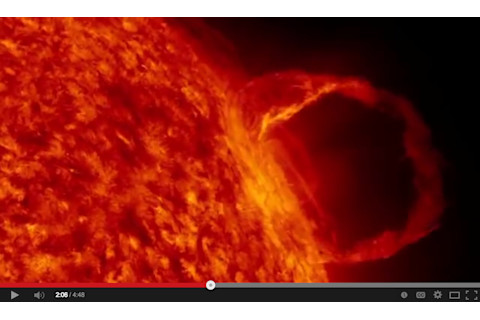
Click for an explanation of coronal mass ejections. (Source: University of Oslo.) If such an event were to happen today, the damages could amount to many tens of billions of dollars — if not more. For a detailed — and visual — explanation of how coronal mass ejections happen, and what happens when the Earth happens to be in the way when all those high energy particles pass by, click on the thumbnail at right. It'll take you to a video produced by the Department of Physics at the University of Oslo.









